
 The newsletter of NASA's Radio JOVE Project
The newsletter of NASA's Radio JOVE Project"Solar and Planetary Radio Astronomy for Schools"

 The newsletter of NASA's Radio JOVE Project
The newsletter of NASA's Radio JOVE Project

[Editors Note: We received email from the Vidyalankar Radio Astronomy Club (VRAC) announcing the successful completion of their Radio Jove system. Like many other teams they are experiencing noise from local power lines and cell towers and are looking to move to another site. Below is their report.]
As a part of active learning we are establishing the VRAC at the Vidyalankar Institute of Technology, Mumbai. Our core committee consists of Prof. Saurabh Mehta (founder) and student members: Mr. Vinay Kumar, Mr. Vipin, Mr. Sohan, Mr. Pranav, and Mr. Vikas.
The objectives of the VRAC are:
Our future agenda:
We gratefully acknowledge support received from the Society of Amateur Radio Astronomers (SARA), USA & the Radio Jove Project, NASA, USA
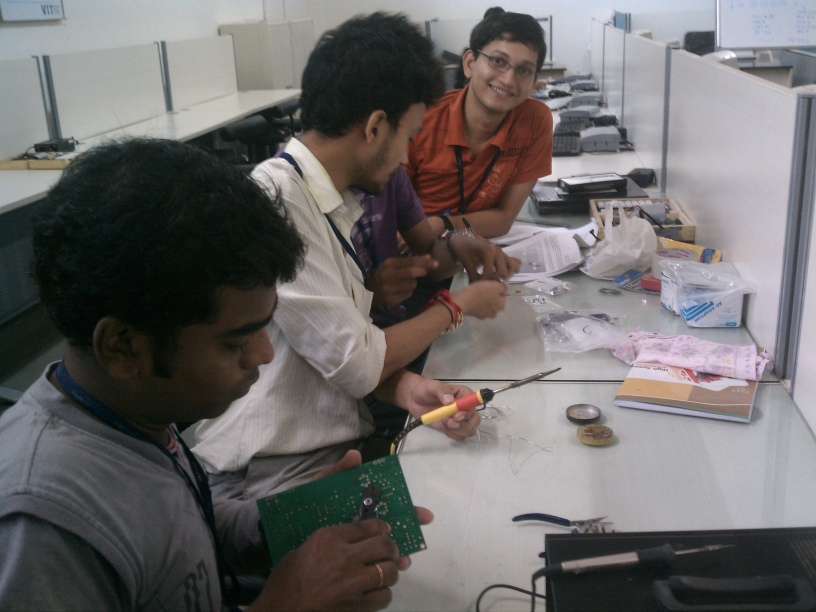
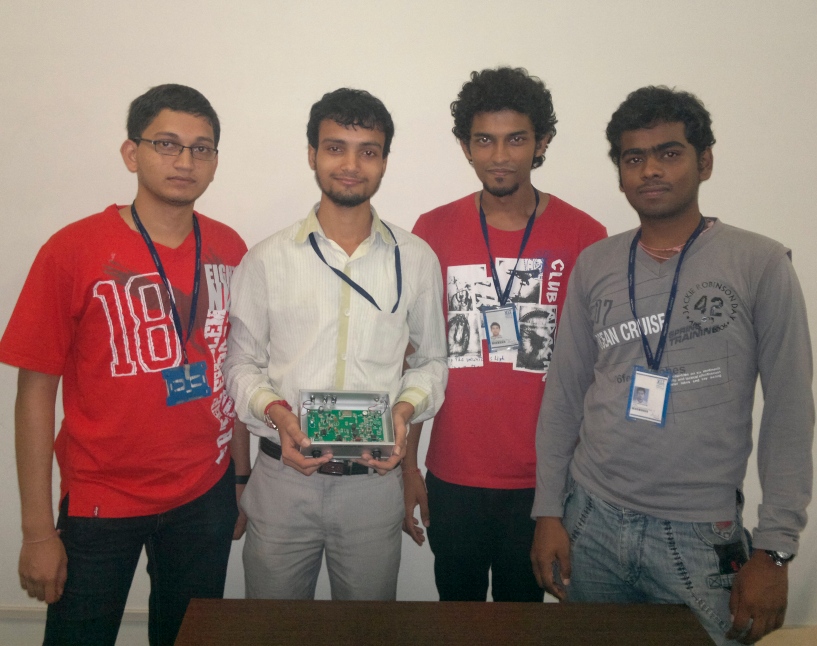
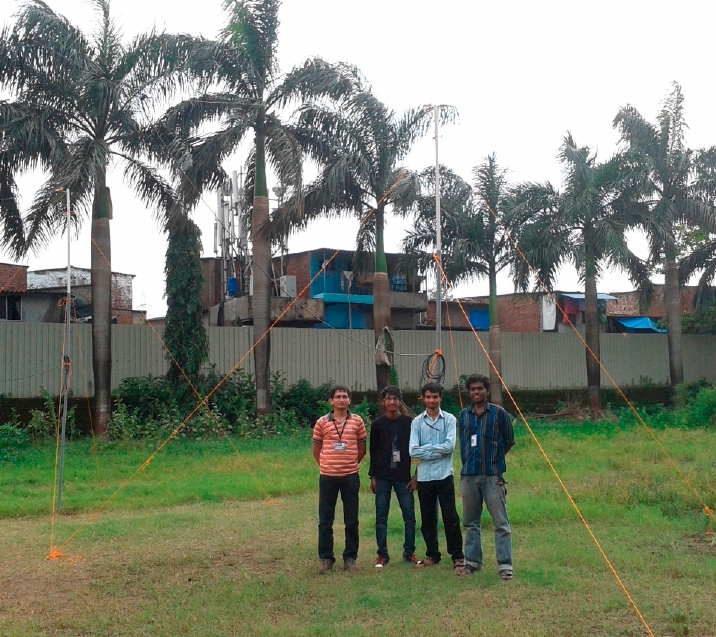
On 1 July 2012, two solar bursts were recorded at Agawa Observatory (Kochi, Japan), Reeve Observatory (Anchorage, Alaska) & Ducksuit Observatory (Lower House, UK). I discuss below the results from analyzing these two sets of synchronous records.
In this article I provide an examination of the two bursts and a discussion on calibration. Martin Wright of Ducksuit Observatory has presented some details of these observations in the SARA Journal, 2012.
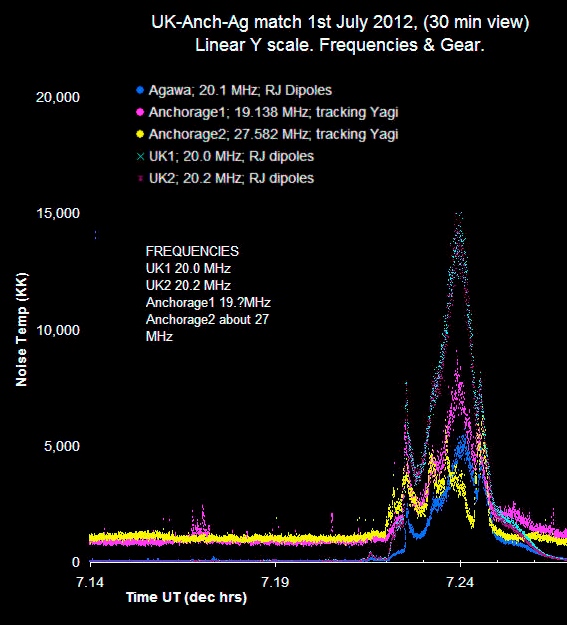
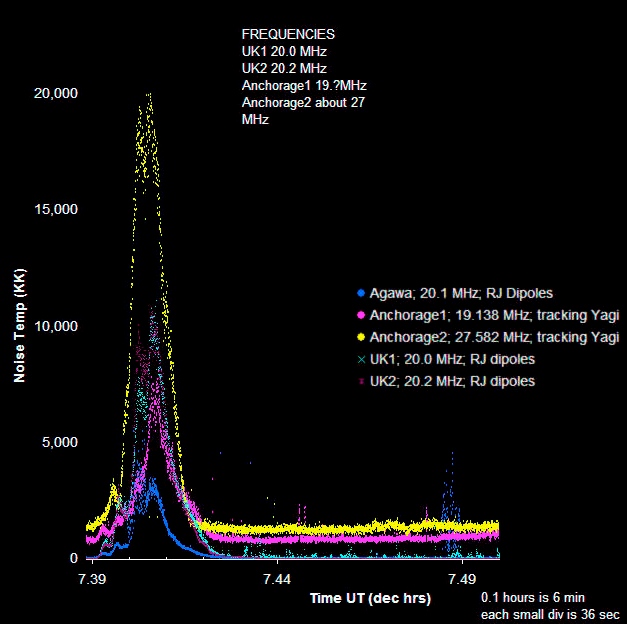
Burst Initiation Times vs. Frequency. I next studied the initiation times of the bursts and how they varied with frequency.

My approach to determine the burst start time involved first identifying the burst initiation time by eye, then performing a distribution of the antenna temperatures in kilokelvins (kK) of the previous 100 samples to determine the upper 5% of these, next examining sequentially the samples that follow the latest of the distribution samples. This is to see if two sequential samples rise above the 95% confidence limit of antenna temperature and the previous sample. The final step is to take the time tag of the first of these two samples as the burst initiation time.
[Editor's Note: Radio-SkyPipe users should be careful to set up the software to use Atomic Time to correctly update the time on their computer. Without accurate computer time synchronization burst correlations are not possible.]
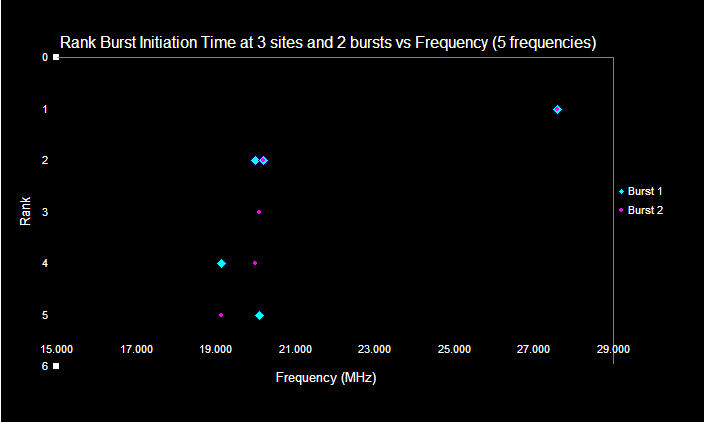
Discussion: Clearly the highest frequency burst (Anchorage 2, 27+MHz) has arrived first for both bursts. Equally the lowest rankings (4 & 5) show that that frequency (Anchorage 1, 19+MHz) arrives last. The significance of the remaining records in the graph for other frequencies is not inconsistent with the idea that higher frequencies arrive first. This, as I understand it, is the prevailing opinion among radio astronomers.
[Editor's Note: These solar bursts, known as Type III bursts, are produced by electron jets propagating away from the Sun. These emissions drift rapidly from high to low frequency as the electrons move outward into regions of lower magnetic field strength.]
Comparison of signal shape and Pre-burst dropout. In Figure 4, I have sought to adjust the presentation so that the signal shapes can be easily compared. This involved using a log y axis, and offsetting Agawa values (y/10) and Anchorage values (*10). Clearly there is great similarity between the Agawa and UK records. Such similarity is highly unlikely to have occurred by chance. This illustrates the importance of careful calibration, which enables these comparisons. Small variations are likely due to effects from the ionosphere.

Pre-burst Noise Dropout (UK 1, 20.0 MHz, burst 2) The UK1 trace shows an interesting phenomena apparently associated with burst 2 (Figure 4). Prior to this burst the galactic background itself is relatively smooth (from 07.33 to 07.39), but riding on top of the background trace are speckled looking noise spikes. About 60 seconds prior to the onset of burst 2 this speckled noise drops out and then is seen to resume as the burst subsides. The cause of this is not immediately clear to me.
[Editor’s Note: Typically, noise dropouts refer to a drop in the receiver background noise level.]
The Long Wavelength Array (LWA) near Socorro, New Mexico is observing Jupiter. I co-lead a team along with Tracy Clarke from the Naval Research Labs (NRL) that received 100 hours of telescope time using the LWA1 instrument (see figures below). The telescope will be observing both Io-related and non-Io-related Jupiter storms from Sept. 2012 – Feb. 2013 in an effort to study Jupiter’s radio wave polarization and to help calibrate the telescope. We are observing Jupiter with two beams having 16 MHz bandwidths and center frequencies of 20 MHz and 28 MHz, respectively. The advanced electronics used by the array allows a full calculation of Stokes parameters to measure all polarizations and intensities. I will be receiving the first set of data very soon, and I hope to use Radio Jove observations from our participants as confirmation for certain Jupiter events. Please keep up the great observations as they are scientifically useful. I will be in touch via the email listserv for solicitations for Jupiter observations to help validate the LWA1 data. More information about the LWA instrument can be found here: http://www.phys.unm.edu/~lwa/index.html.
Thanks for all the great efforts to observe Jupiter!
[Editor's Note: Be sure to check out LWA-TV for live and pre-recorded radio all-sky images.]
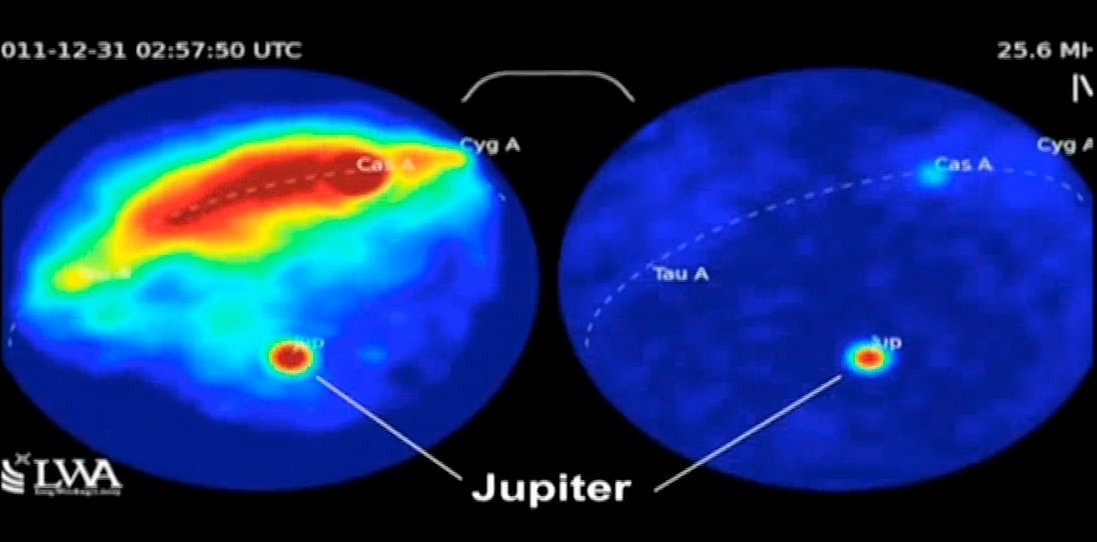
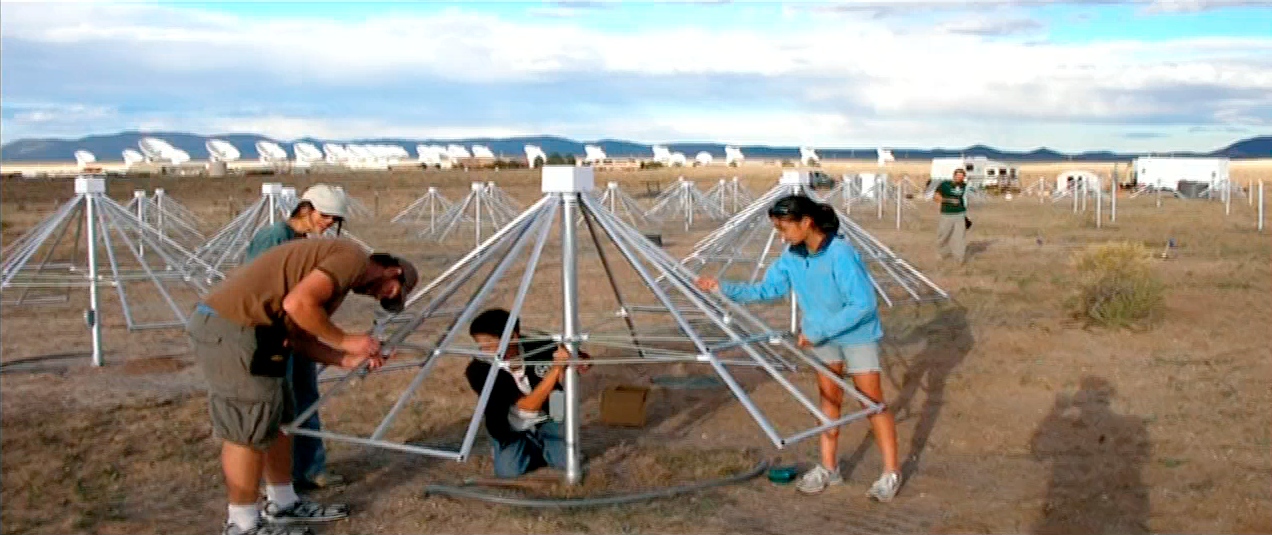
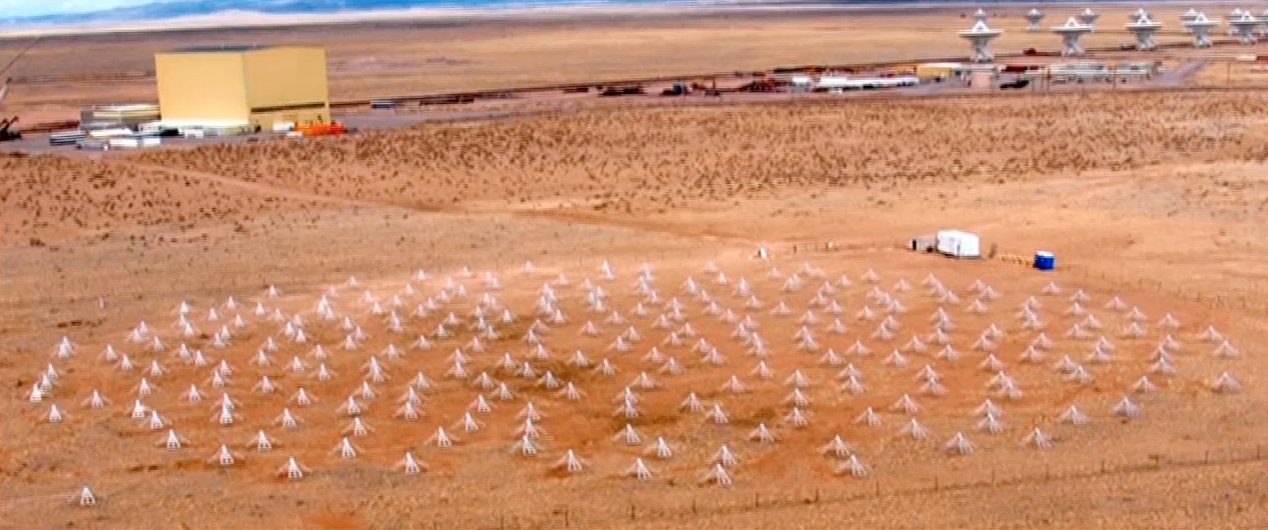
The Virtual Wave Observatory (VWO, http://vwo.nasa.gov) project was started four years ago as a resource to enable scientists studying radio emissions from the Sun, Earth and the other planets in our solar system to easily search for and compare a wide variety of radio wave data. The VWO is also interested in supporting the amateur radio astronomy community. The VWO Education page, for example, provides links to several wave-related educational programs. The Tutorial page provides documents that help users to properly interpret wave data.
VWO provides several ways to access and view wave data. These data may be especially useful for amateurs who wish to confirm their observations against data from professional observatories and satellites.
VWO Data Resources Page This page provides links to archives world-wide that host wave data online. You may want to stop by here first to get a sense of what's out there (and if you know of any professional archives of wave data that we missed let us know, we'll add it.)
VWO Data Query Page This is the main interface to provide you with uniform access to a wide variety of data. You can specify a date range and the interface will highlight those data sets we currently have identified. We are adding new data sets frequently so if your favorite isn't there let us know that too. Much of our data is in the form of dynamic spectrogram (color-coded frequency vs. time) plots that you can simply view in your web browser. For the rest, we provide access to the Autoplot software that enables you to display the data on your computer.
For the 2012 July 1 Type III solar bursts mentioned in the article above, the VWO can provide access to dynamic spectrograms from the Wind and STEREO spacecraft (Figure 1). These spectrograms span the frequency range from a few kilohertz to 16 MHz and show the two bursts very close to one another between 7 and 8 UT.
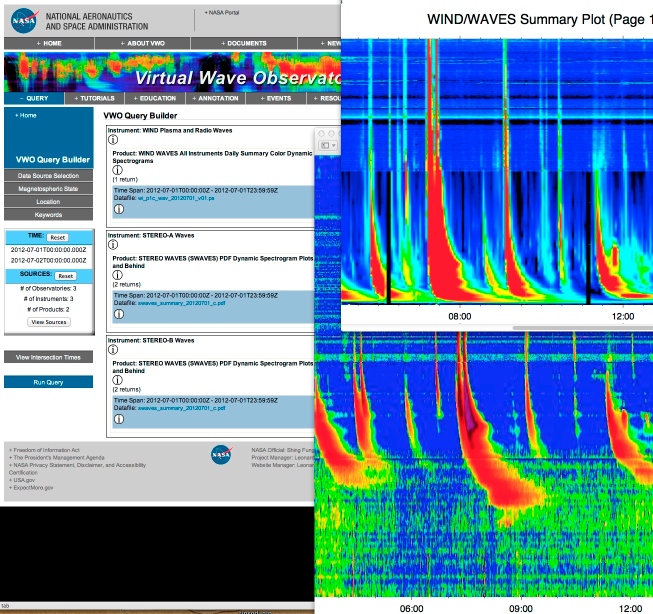
The data that can be accessed through the VWO represents decades of scientific research. For example, VWO enables access to the Voyager 1 and 2 Planetary Radio Astronomy receiver dataset durings its Jupiter flyby in 1979. The VWO provides static GIF images of these data that you can browse through or you can download the binary data files and through the Autoplot software (see Figure 2) you can zoom, change color and slice the data nearly any way you like.
Stop by and try it out for yourself.
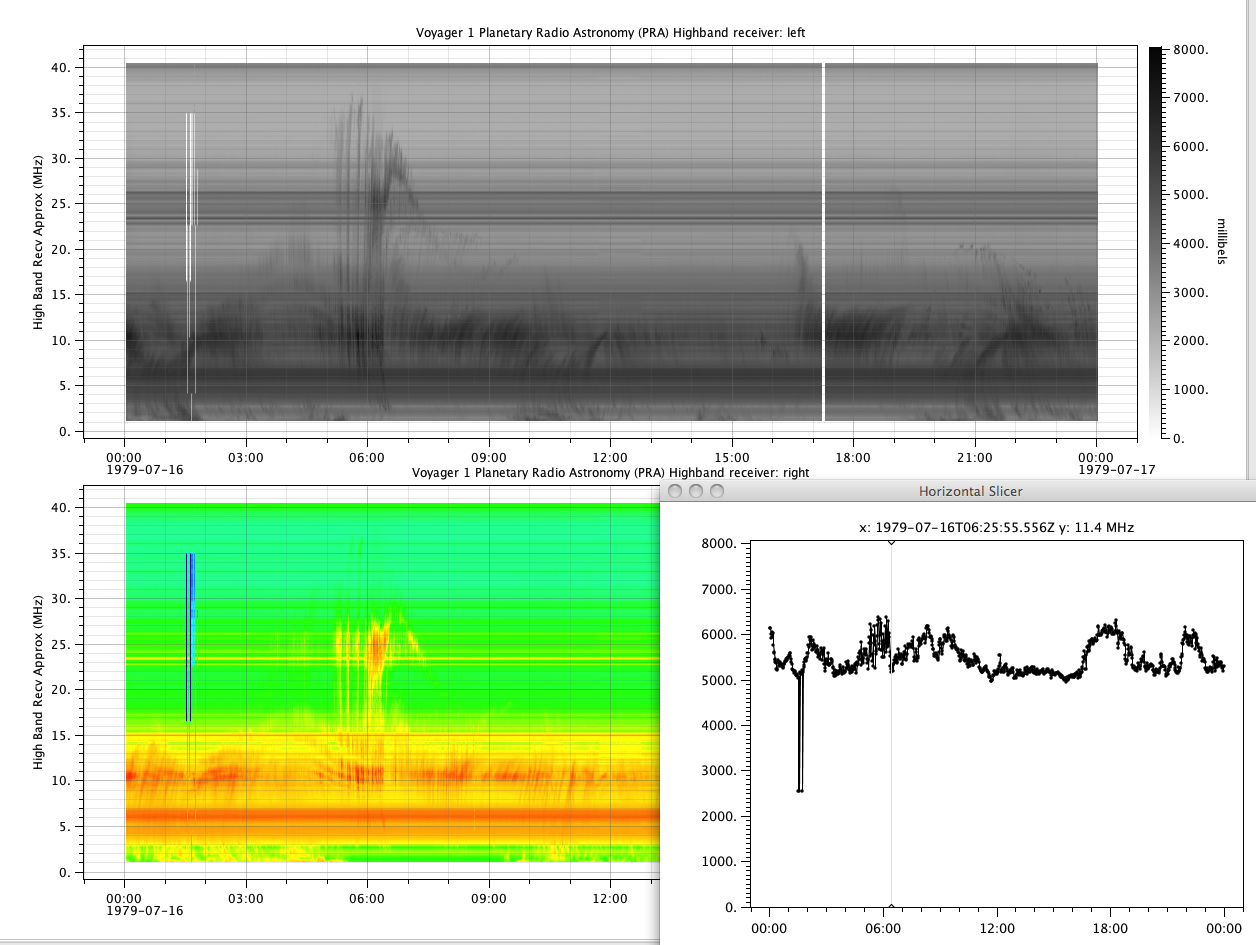
The Radio Jove Project now accepts payment via Paypal™. Our order form will soon be updated to allow you to click on a specific item to take you directly to a Paypal site to process your payment. Paypal accepts all major credit cards. The order form reflects new pricing to allow for credit card payments and easier bookkeeping. We hope that this makes it easier for people and organizations to participate in Radio Jove. Until the order form is officially updated, please go to the Paypal website and search for The Radio Jove Project, Inc. The contact name is Chuck Higgins and my email is chiggins@mtsu.edu. You can contact me through email and send your order form through email to avoid mail costs.
The Radio Jove order form is found here: http://radiojove.gsfc.nasa.gov/office/order_form.html
Thanks for your patience while we get everything working
smoothly.
Clear and radio-free skies!
As we approach the maximum of the solar cycle and with a Jupiter observing season well under way, we anticipate the number of emails to our distribution list announcing observations of activity to increase. This will be good news to some observers but may impose a burden in e-mail traffic for others. Accordingly we have set up a new distribution list for those observers interested in submitting and receiving messages specifically about (often time sensitive) Jove observations.
Consequently, we ask that all emails announcing observation results use the new email distribution list: RADIOJOVE-DATA@LISTS.NASA.GOV
If you wish to receive or send messages about observation results you will need to subscribe to this new list. To subscribe to this new list simply go to https://lists.nasa.gov/mailman/listinfo/radiojove-data and enter your e-mail address. (The rest of the form is optional.) This new email distribution list is specifically for announcing Jove program observations of activity from Jupiter, the Sun and other relevant radio sources detectable by Radio Jove equipment. Typically these observations will include SkyPipe plots and/or spectrograms depicting emission activity.
We also ask that all emails that are mainly between two individuals not be distributed to the entire list.
The original radiojove distribution list will be used for announcements of coming events, discussion of Jove specific technical questions, and other Jove related general interest materials. This is the distribution list that everyone who registers with the Jove program is automatically signed up for.
The JOVE Bulletin is published twice a year. It is a free service of the Radio JOVE Project. We hope you will find it of value. Back issues are available on the Radio JOVE Project Web site, http://radiojove.gsfc.nasa.gov/
For assistance or information send inquiries to:
or
